Whale’s tooth
This is a tabua (Tam-Boo-wah) from Fiji. Tabua are pierced and braided whales’ teeth, originally taken from the lower jaw of sperm whales and are highly significant and valuable objects in traditional Fijian society. Fijians consider them to be kavakaturanga (chiefly items).
This one was presented by the Methodist Church in Fiji to the Methodist Church in Australia on the eve of its becoming part of the Uniting Church in Australia on June 21, 1977.
Inscribed “Special general conference, Methodist Church of Australasia, The Methodist church in Fiji acknowledges its gratitude to the Methodist Church in Australia for its long associations with our conference. May God Bless you as you join The Uniting Church. 21st June 1977, Suva, Fiji”.
We can’t tell the history of the Uniting Church without recognising our predecessor Churches, the Congregational Union of Australia, the Presbyterian Church of Australia and the Methodist Church of Australasia, the presence they were here in Australia and with our partner Churches.
So, this then, is the representation of our past and of the relationships built with our neighbouring countries, starting in 1827 in Tonga with the Methodist Church, the 1880s in Korea with the Presbyterian Church and even further back if you look at the work of the LMS in the Pacific and Asia. And of course, those partnerships and more continue today through the work of UnitingWorld.
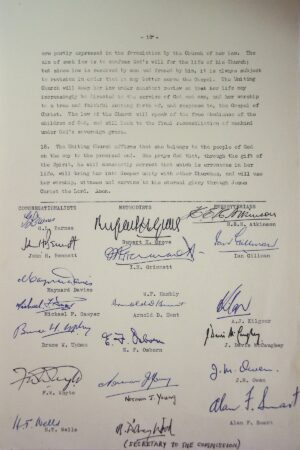
Basis of Union
This is a fairly nondescript item, but perhaps the most important one when talking about the history of the Uniting Church in Australia – it is the original Basis of Union signed by the members of the Joint Commission.
The Commission was made up of seven members each (all men) of the ante(cee)dent churches in the mid-1950s.
The work of the Commission was undertaken in three main stages. First, a statement entitled ‘Faith of the Church’ was prepared and presented to the churches in 1959. Comments on the first report were received and taken into account in the preparation of the Second Report – ‘The Church; its Nature, Function and Ordering’.
This report, together with a proposal for a Basis of Union, was presented to the churches in 1964 and was subsequently discussed very widely and at every level of the churches’ life. The third stage began with a detailed examination of all comments and suggested amendments to the proposed Basis of 1964. The federal courts had given freedom to the Commission in its work of revision since none of the recommended changes was passed on as mandatory.
This Basis of Union was completed by the Joint Commission on Church Union and presented to the Churches for consideration in 1971.
Following approval of the Basis of Union by the Conference of the Congregational Union in 1973, the General Conference of the Methodist Church in 1974 and the General Assembly of the Presbyterian Church in 1974, the Basis became a permanent document to guide the life of the Uniting Church and paved the way to form and enter the UCA.
The only change to the Basis came in 1992 when the ASC resolved to issue the non-inclusive language edition which saw the elimination of the male personal pronouns with reference to God and, female personal pronouns for the church were also replaced.
Generic usage of ‘man’ and ‘mankind’ were also changed in each instance.
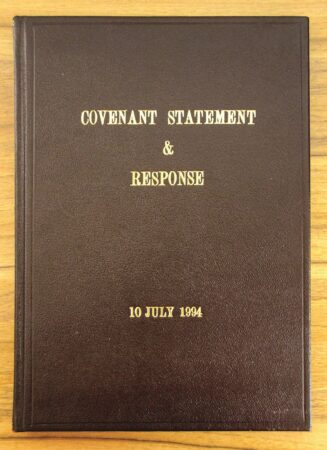
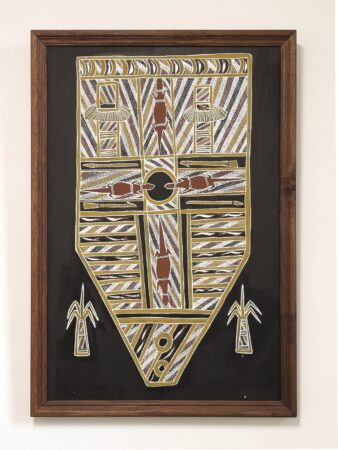
Covenant and painting
Three years after the formation of UAICC in 1985, Congress brought to the 5th Assembly, a request to establish a Covenant with the Aboriginal members and the wider membership of the Uniting Church. At the 7th Assembly in 1994, that Covenant was realised and here is the original Covenant signed by then President Jill Tabart and Bill Hollingsworth, then Chairperson of the UAICC.
The words of Covenant Painting were also presented to the members of that Assembly by Djiniyini Gondarra. The final paragraphs are astounding and as rich and generous today, as they were 30 years ago: “Your members of the Assembly and visitors are being initiated in receiving this painting – You are invited to stand with us, the members of Congress in our struggle. Even though you cannot understand the deep meaning of this painting, the more you seek to discover Aboriginal spirituality, the more your spirit will touch ours, and our covenanting together will become a reality. This painting we offer as a sign of our covenanting together.”
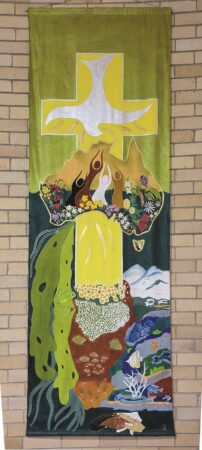
Multicultural banner
In 1985, the UCA declared itself to be a Multicultural Church. The Basis of Union pointed to the fact that the Uniting Church united not only three former denominations but also Christians of many races, cultures and languages.
The statement reads “the multicultural Uniting Church seeks to be a sign of hope within the Australian community, and particularly to those who are pushed to its fringes on racial and economic grounds”.
In 1987, the Tongan National Conference was the first National Conference to be formed. There are now 13, with the Ibero-Latino National Conference forming in 2019.
Each week, people across the Uniting Church worship in over 40 languages. This banner came to symbolise the multi-cultural/cross-cultural nature of our church and is featured on all the MCCM posters.
It is fitting that it now hangs at Bankstown Uniting Church, one of the most diverse CALD congregations in the country, with dedicated Arabic and Tongan services each week.
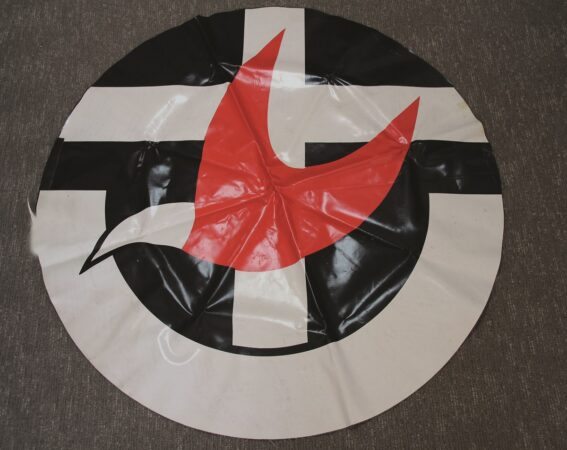
Mardi gras banner
In March 1998, 17 Uniting Church ministers and more than 120 members marched in the Sydney Mardi Gras. Although there had been a number of people from the Uniting Church in previous marches, 1998 was the first time people from the UCA had entered a float in the parade.
The group’s leading banner read “Celebrating diversity, members of the Uniting Church”. A second banner had a giant hole where the church’s logo had been removed shortly before the parade after the NSW Council of Synod had requested the group not to march with the Uniting Church logo.
I chose this banner to symbolise the strong core belief in social justice that the UCA has always been associated with. Our Church, among other things, was the first to make apologies to the Stolen Generation, the Forgotten Australians and the survivors of institutional abuse; we have been advocates for refugees, those in detention, those suffering from domestic violence and supports people with disability. We were the first mainstream church to allow our ministers to conduct same-gender marriages.
One of the most significant letters I have seen was a letter from Nelson Mandela thanking our Church for a donation of $10,000 to his political campaign after he won election to the South African Presidency in 1994.
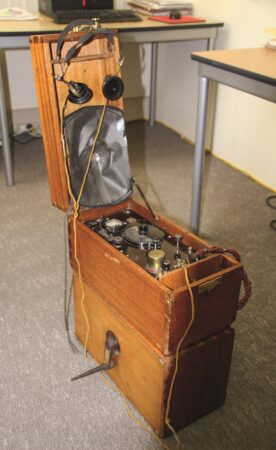
Radio transmitter
In 1926, Alf Traeger joined Rev John Flynn in an experimental trip to Central Australia to test out wireless equipment which would enable remote family’s access to medical treatment by using radio equipment.
This was essential to setting up the Australian Inland Mission Aerial Medical Service. As a result of these experiences, when Traeger returned to Adelaide he found that a person could drive the generator using bicycle pedals and he built his transceiver into a box. His famous “pedal wireless” was a pedal-operated generator which provided power for a transceiver.
Over time, emergency call systems linked country-dwellers with hospitals and sets were used by the School of the Air, doctors, ambulances, councils, taxis, airlines and ships.
This particular radio transmitter was used by Rev Fred Patterson in the Southern Patrol in 1933.
I also have this original minted $20 note from 1994, which depicts John Flynn.
As well as forming Patrol Padres and the Aerial Medical Service, Flynn also recognised the need for medical care for residents of the vast Australian outback and established bush hospitals, nursing homes and welfare centres.
Whilst Frontier Services continue the legacy of the Bush Chaplain and the Outback Links program, the UnitingCare Australia network is one of the largest networks of social services providers in Australia, supporting 1.4 million people every year across urban, rural and remote communities.

